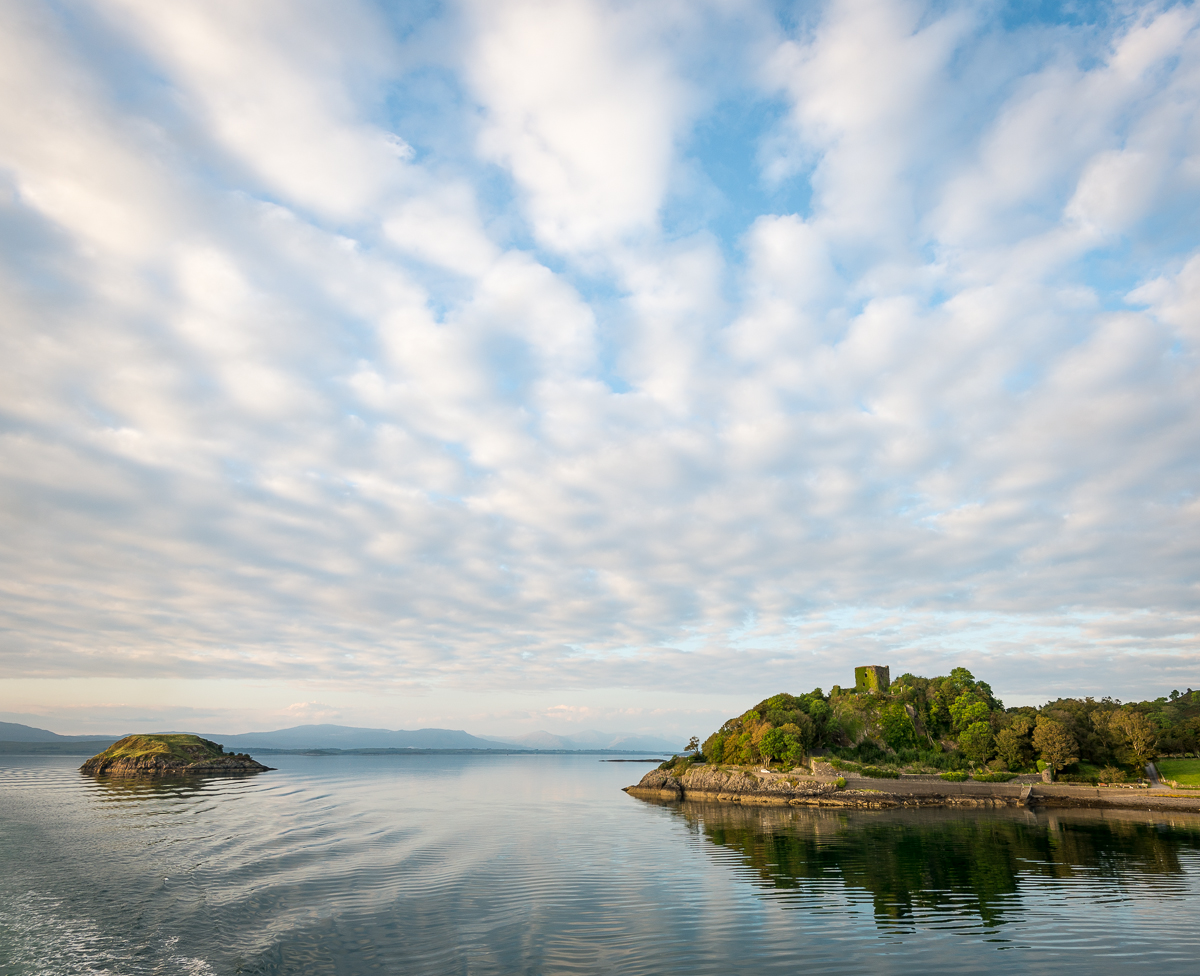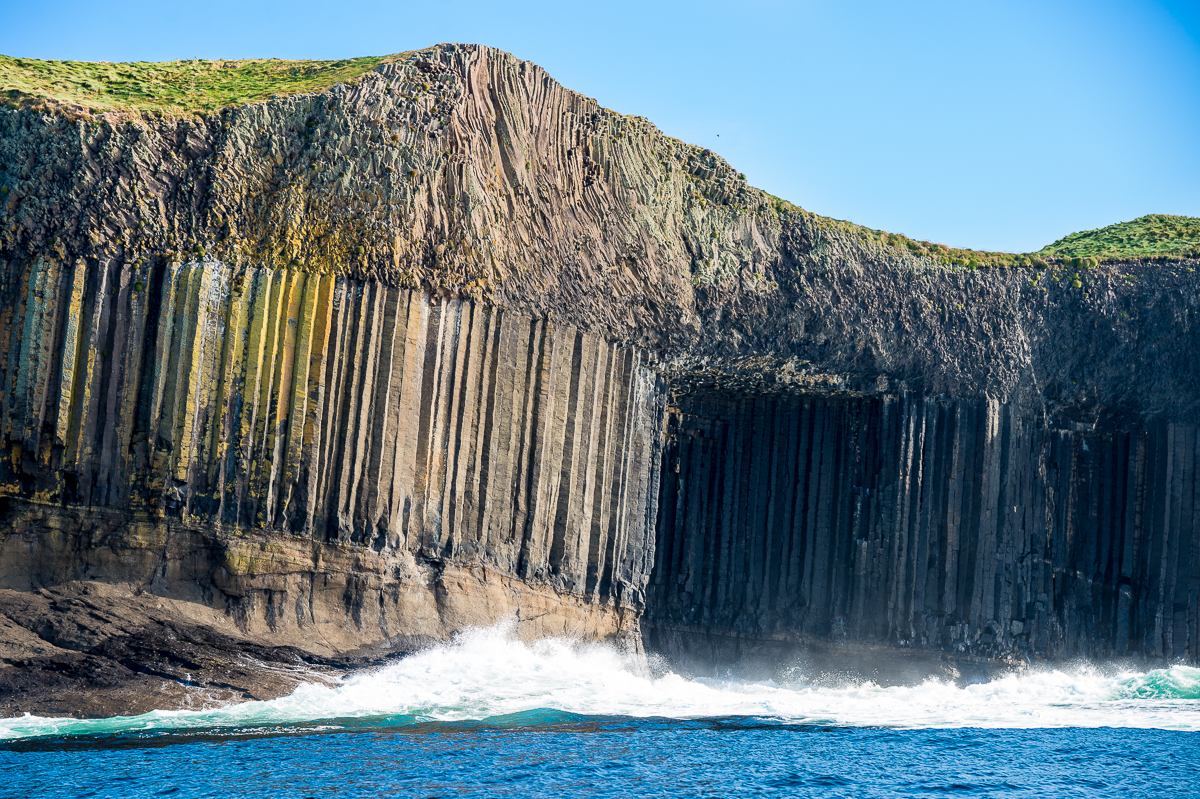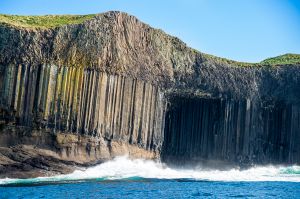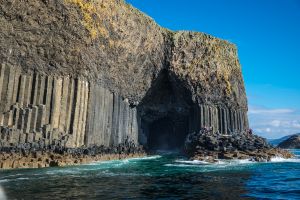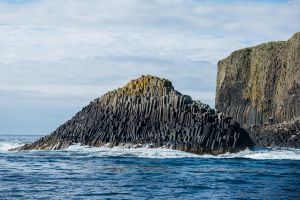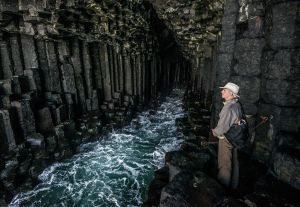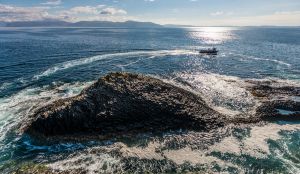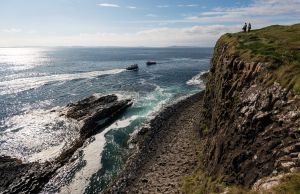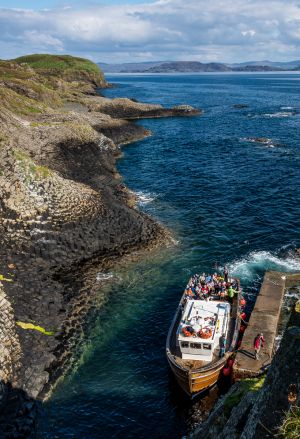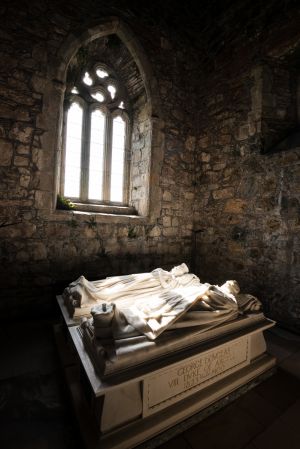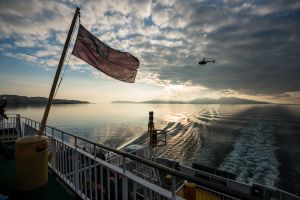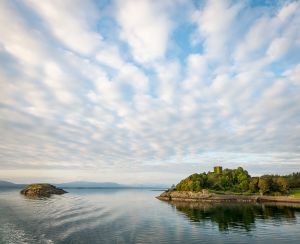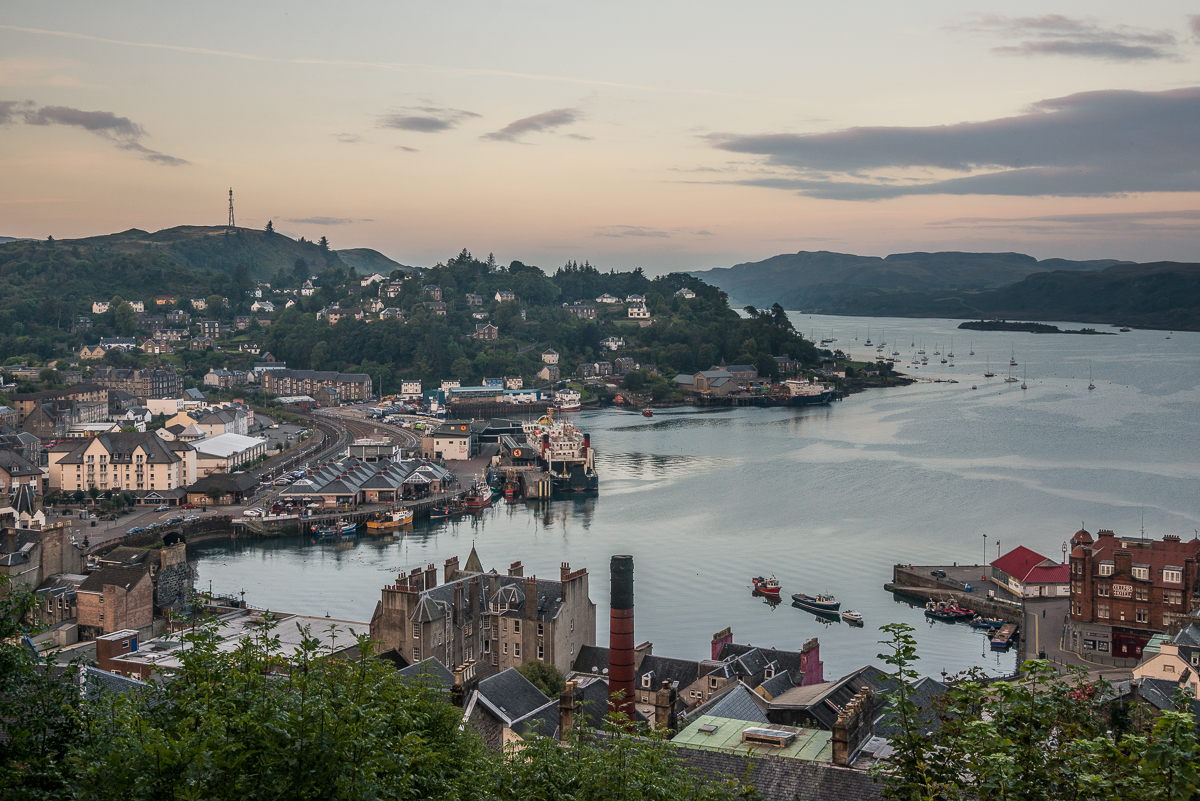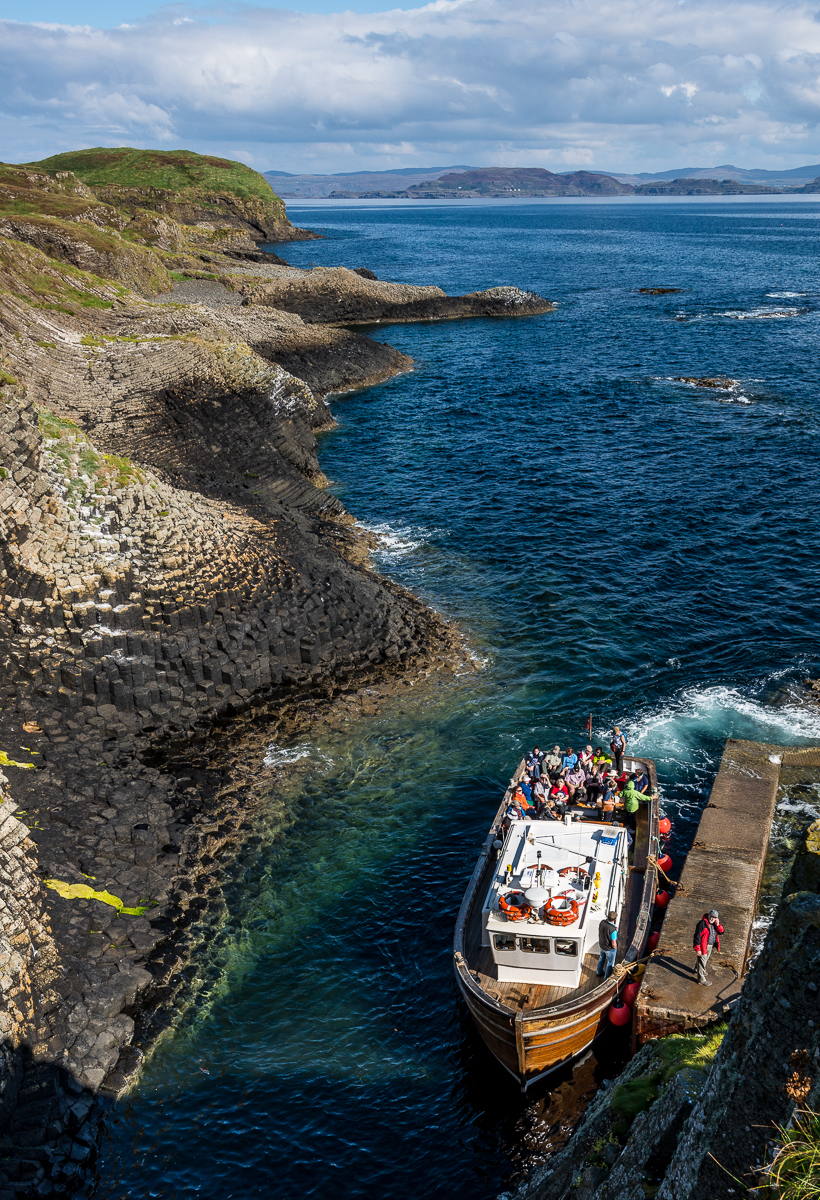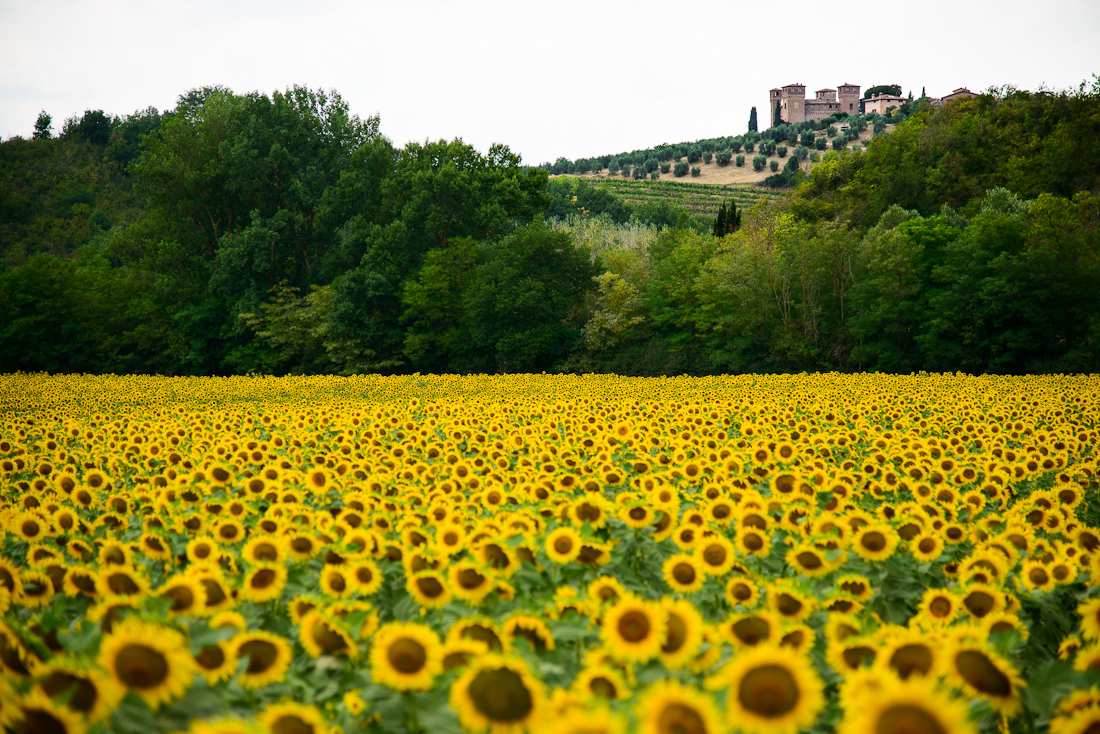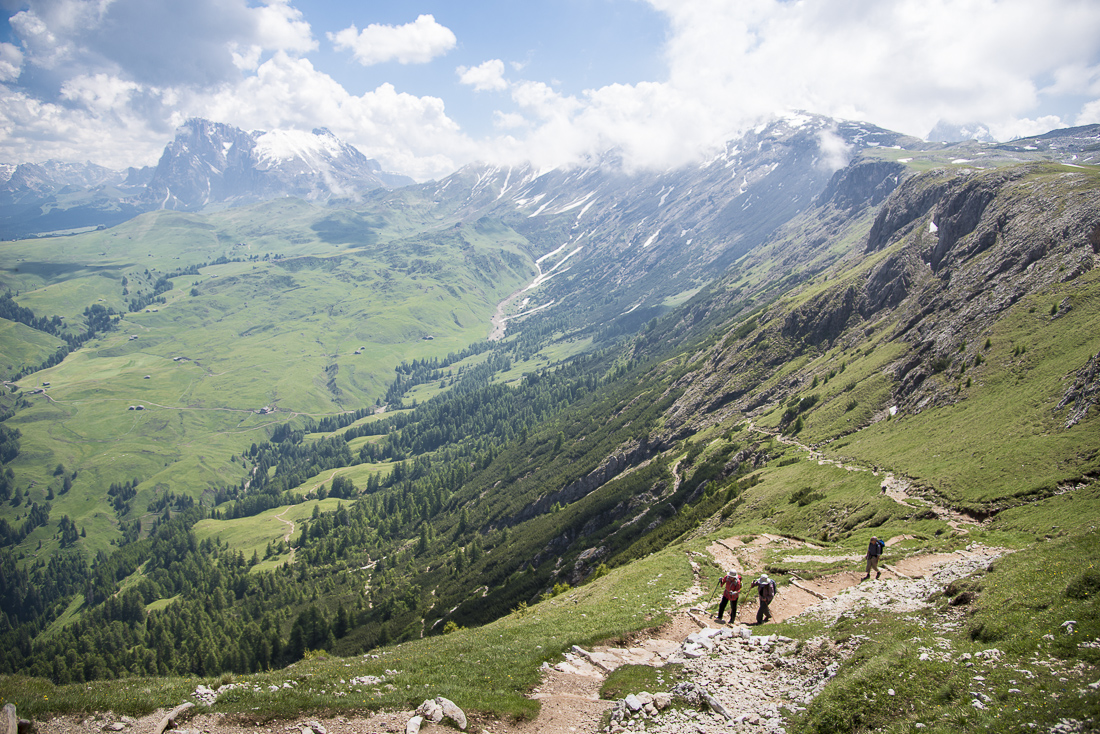Scotland’s odd little Inner Hebrides island of Staffa is famous for more than sightseeing. The 19th Century composer Felix Mendelssohn wrote a now-famous overture about it: the Hebrides Overture (a.k.a. “Fingal’s Cave”). Too bad there was no orchestra around to play it when I went to visit. (You can listen to it here if it’s not playing automatically: http://www.vicenzapuericantores.it/mp3/mendelssohn_hebrides.mp3 ). The Isle of Staffa is just a few hundred yards across, and is a geological fluke. It’s a volcanic island with a huge layer of crystalized basalt columns. Its most famous feature is that sea cave Mendelssohn focused on, now called Fingal’s Cave. It’s about 200 feet deep.
The trip back from Staffa consists of an ferry ride to the Isle of Iona, another ferry to the Isle of Mull, a car ride to catch the ferry back to Oban on the mainland. The church in the pictures is the Iona Abbey, established in 563 A.D. by now-Saint Columba and now a busy pilgrimage destination for folks who (for some reason) want to visit Columba’s grave. That prominent stone cross, St. Martin’s Cross, is over 1200 years old. The pretty pictures of the bay and from the ferry are Oban Bay.
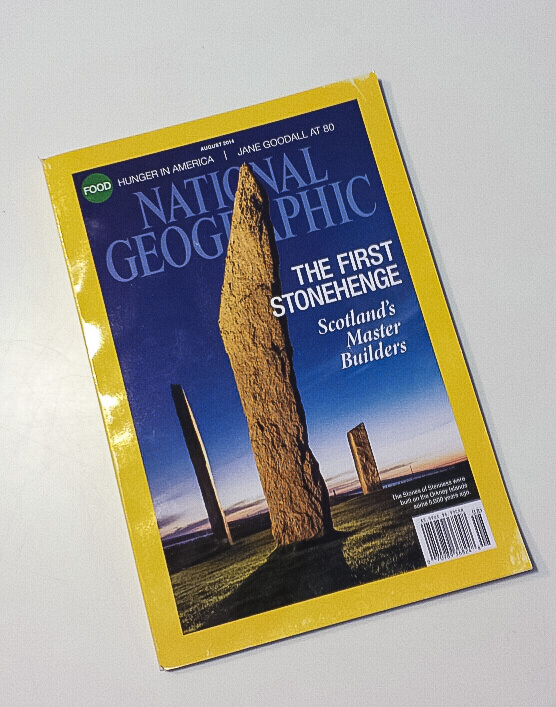
I was lucky to be able to travel Scotland with Jim Richardson and a couple of Scotch natives as guides. Jim is a long-time National Geographic photographer and is their go-to guy for Scotland; he’s been there dozens of times. In fact, the August 2014 edition of NatGeo has one of Jim’s photo essays from Scotland as its cover story. Great to have Jim to show about a dozen of us around Scotland. That’s Jim in the red jacket waiting on the dock in the picture above (apparently someone from the group was late getting back to the boat . . .)
